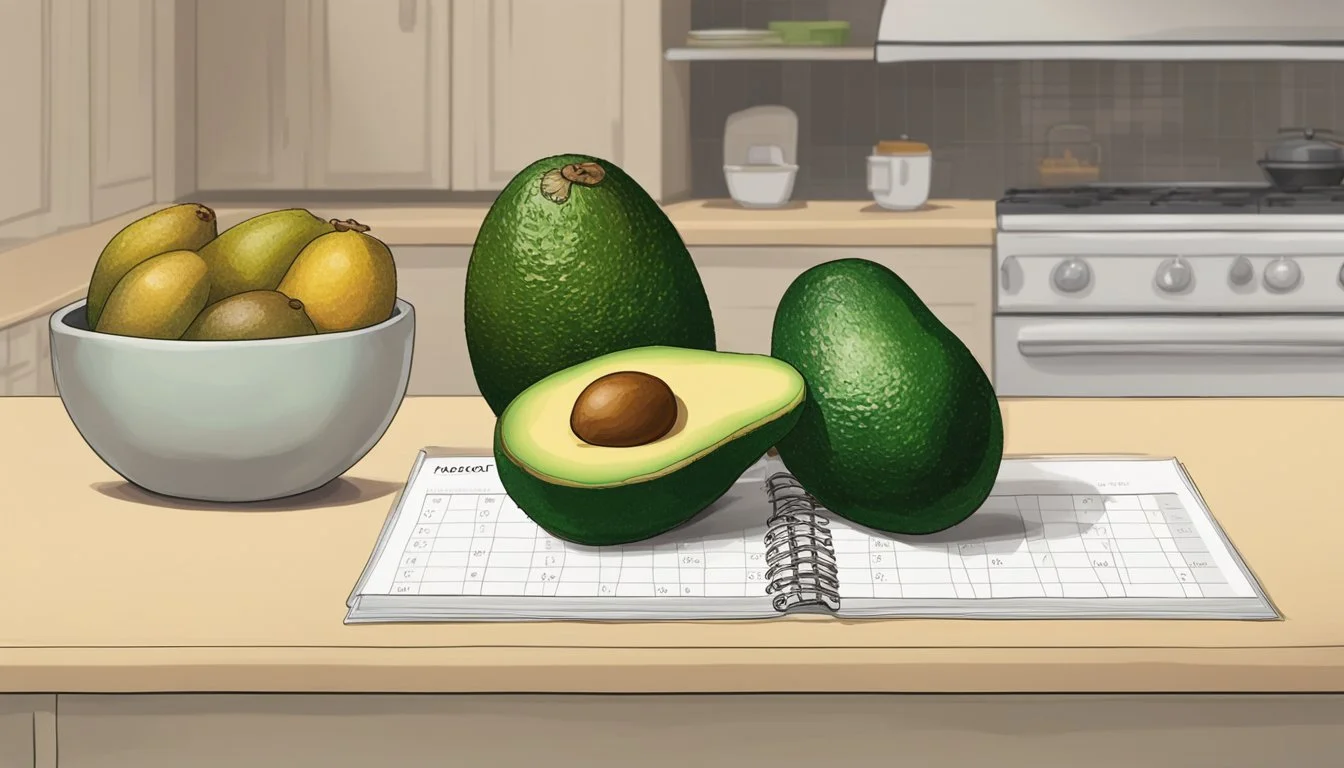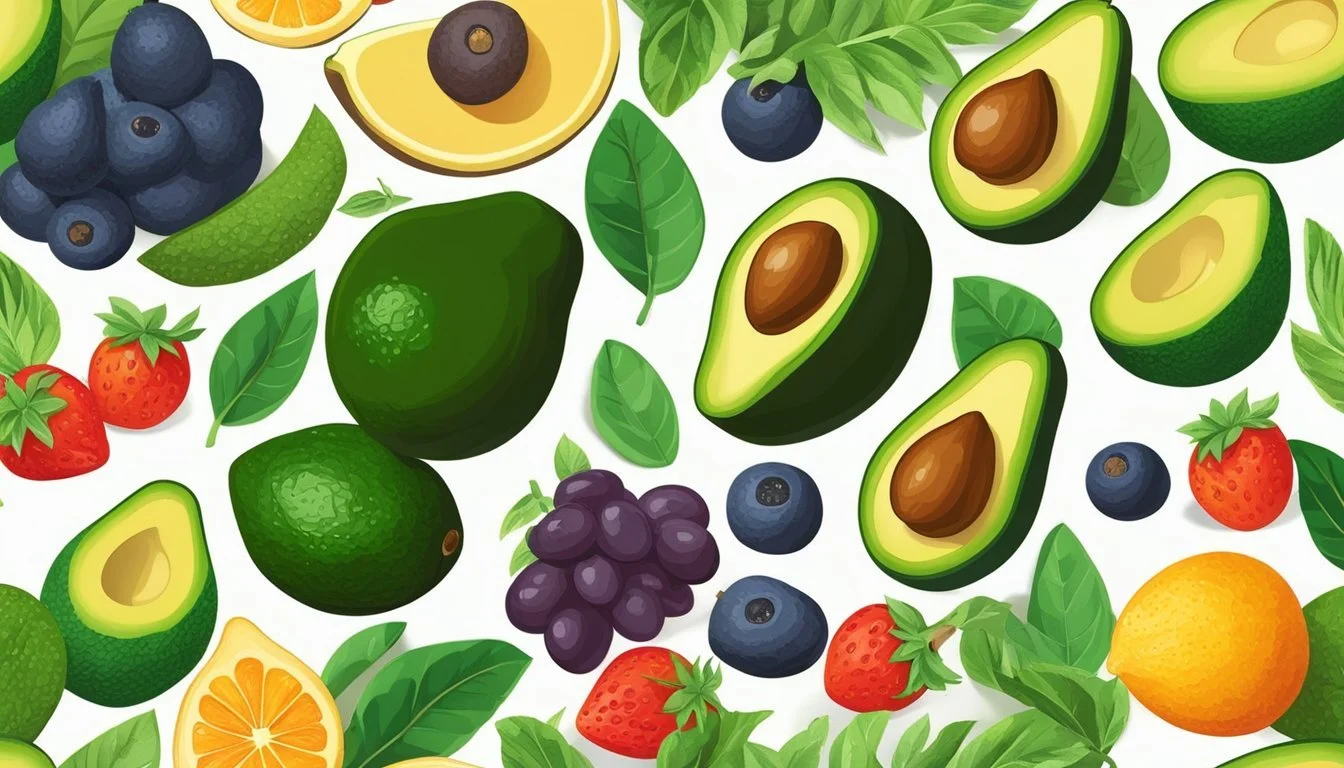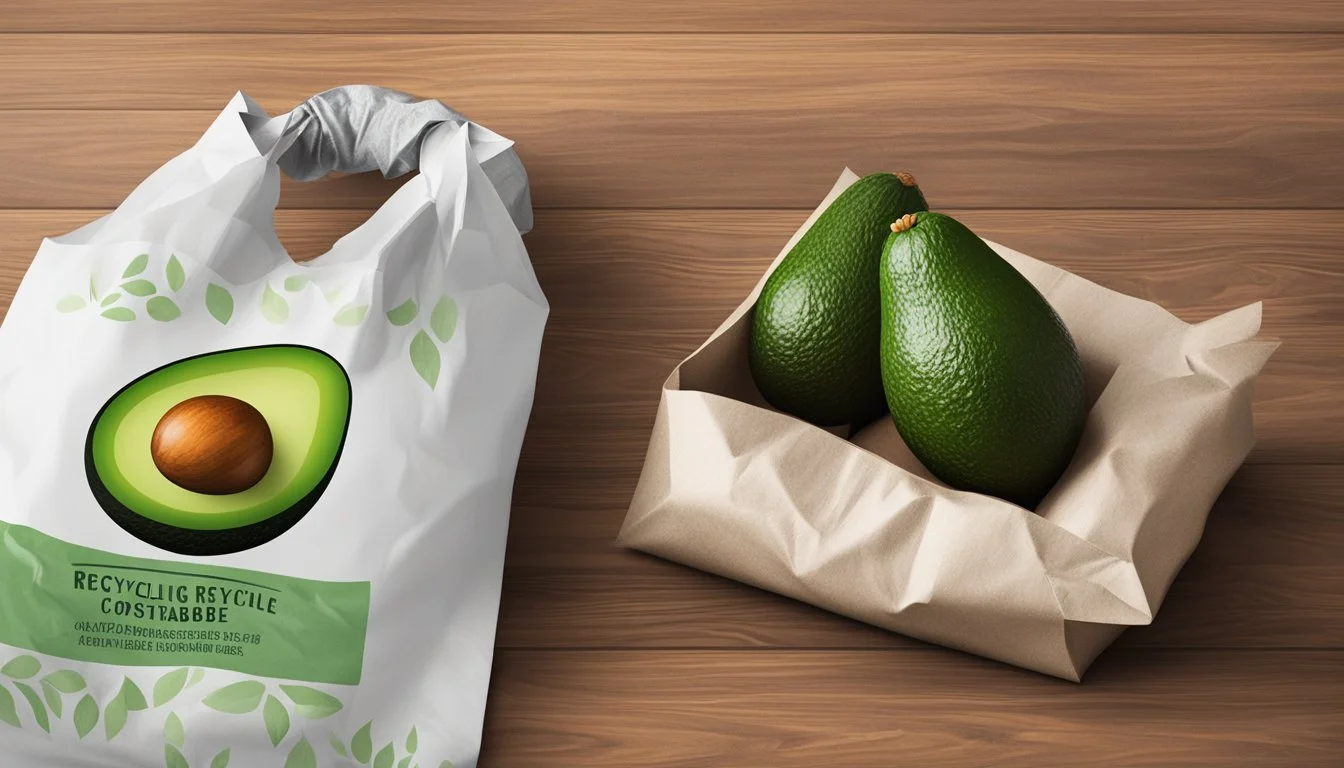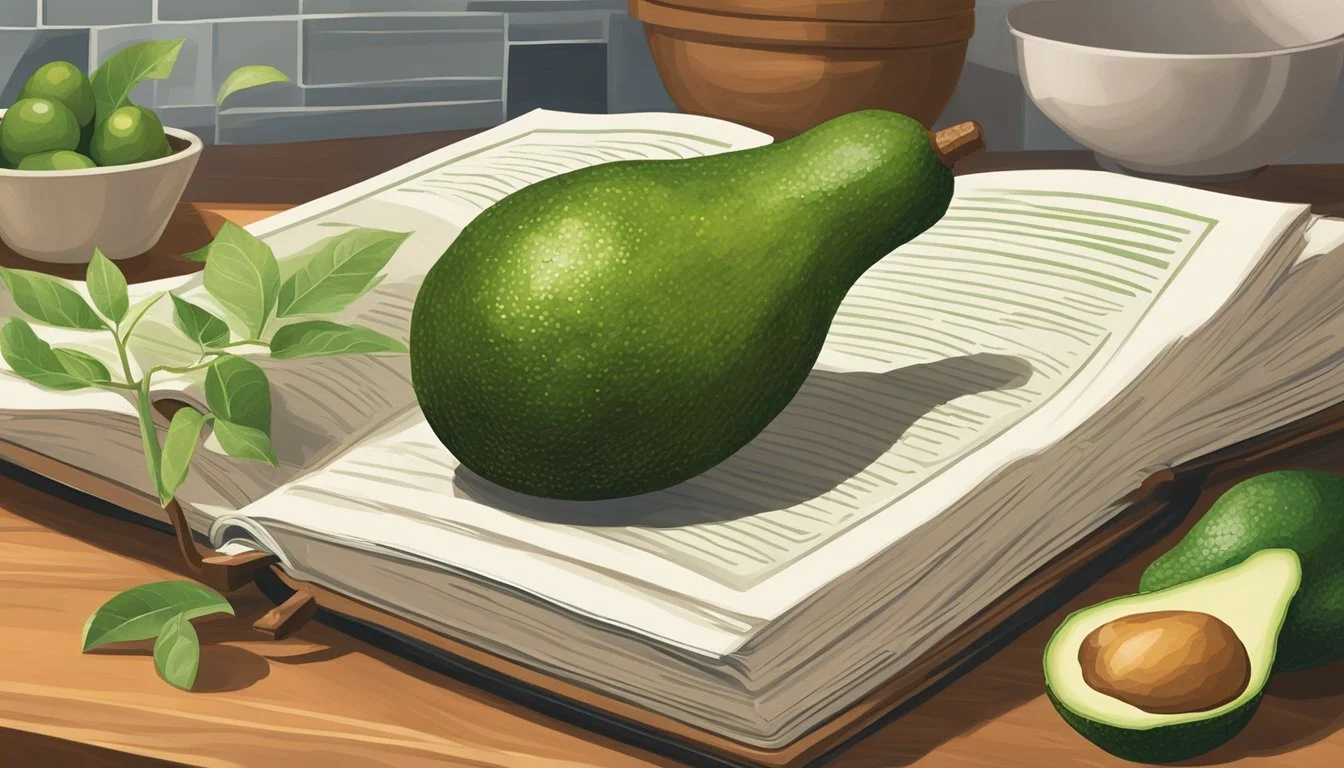How Long Does Avocado Last?
Unveiling Shelf Life and Storage Tips
Avocados are a versatile and nutritious fruit favored for their creamy texture and rich flavor, popular in dishes ranging from guacamole to toast toppings. However, the shelf life of an avocado is finite, and understanding how long it lasts can help make the most of its use. Fresh avocados typically last for 3-4 days when stored at room temperature, and their lifespan can be extended up to 7-10 days when refrigerated. The key to preserving an avocado's freshness lies in minimizing its exposure to air and managing its storage environment adequately.
Preserving avocados properly after they’ve been cut is crucial to maintain their quality. The fruit's flesh oxidizes and turns brown quickly when exposed to air, a process that not only affects its appearance but can also alter its taste. To mitigate this, one can apply lemon or lime juice on the exposed surfaces, which adds a protective acidic layer that slows down oxidation. If an avocado is halved and the pit is removed, the remaining fruit should be stored in an airtight container or tightly wrapped in plastic to reduce contact with oxygen. These methods help to keep the cut avocado fresh and green for a longer period.
Types of Avocados
Avocado varieties differ in size, flavor, and color, ranging from green to dark green. Their shelf life can also vary, with ripeness often indicated by a change in hue and texture.
Hass Avocados
Hass avocados are the most prevalent, known for their creamy texture and pebbly skin that shifts from green to dark green or even purplish-black as they ripen. They have a year-round availability and are the go-to choice for many consumers.
Fuerte Avocados
Fuerte avocados are larger than Hass and maintain a consistent green color even when ripe. They have a more smooth and medium-thick skin, offering a mildly nutty flavor, and are typically in season from late fall to spring.
Other Varieties
Beyond Hass and Fuerte, there are several other avocado varieties each with unique characteristics. They may present variations in optimal storage times and conditions. Some other common varieties include:
Bacon avocados: Remain green when ripe and have a lighter flavor.
Reed avocados: Large and round with thick skin that remains green.
Zutano avocados: Have shiny, thin skin with a light taste, staying green upon ripening.
Each variety's shelf life is influenced by its stage of ripeness upon purchase and subsequent storage conditions.
Factors Affecting Avocado Shelf Life
The longevity of an avocado's shelf life is influenced by various factors including its ripeness, storage conditions, and exposure to ethylene-producing fruits. These elements collectively determine how long avocados retain their freshness and edibility.
Ripeness Level
Unripe Avocados: Typically last 3-5 days on the counter and can take several days to ripen. Once ripe, they can be moved to the refrigerator to extend their shelf life for another 7-10 days.
Ripe Avocados: More sensitive to environmental conditions and should be eaten within 1-3 days if kept at room temperature. In the refrigerator, their quality can be maintained for up to a week.
Temperature And Environment
Counter: Best for ripening avocados. Keep them in a cool, dry place.
Refrigerator: Slows down ripening and is ideal for storage once avocados are ripe.
Brown Paper Bag: To expedite the ripening process, store avocados in a brown paper bag at room temperature.
Presence of Ethylene Producing Fruits
Ethylene Gas: A natural compound that can speed up the ripening process.
Examples:
Apples, onions, and tomatoes are ethylene producers.
Storing avocados with these fruits in a closed space, like a brown paper bag, can quickly increase ripeness.
It is imperative that one assesses these variables when determining the optimal conditions for avocado storage and consumption.
Avocado Storage Methods
Proper storage extends the freshness of avocados, whether they're whole or cut. The key is minimizing exposure to air and controlling the temperature.
Storing Whole Avocados
For whole avocados, the refrigerator is the best storage spot once they're ripe. They can last in the fridge for up to two weeks. Ensure they're not placed in a crisper drawer with high humidity, as this can lead to premature spoilage.
In the refrigerator: Place ripe avocados in the fridge.
Duration: Keeps fresh for up to two weeks.
Storing Cut Avocados
Cut avocados are prone to oxidation, which leads to browning. To prevent this:
Brush the cut surfaces with lemon juice or lime juice. Acidic environments hinder the oxidation process.
Cover the avocado halves in plastic wrap, pressing it down to remove any air between the wrap and avocado.
For additional protection, place the wrapped avocado in an airtight container in the refrigerator.
Optionally, a thin layer of olive oil can be applied to create a barrier against air.
In the refrigerator with citrus:
Brush with lemon or lime juice.
Tightly wrap in plastic.
Store in an airtight container.
With olive oil:
Apply a thin layer to the cut surface before wrapping.
Avocados stored this way will remain fresh for about 2-3 days.
How to Tell if An Avocado Is Ripe
Determining the ripeness of an avocado involves a few simple tests that can be done quickly. An avocado that is ripe will display certain characteristics in its exterior appearance, response to pressure, and color beneath the stem cap.
Exterior Inspection
A ripe avocado often has a skin that is dark green to nearly black. One should look for avocados with bumpy skin, as this texture is typically indicative of ripeness. An unripe avocado will have smoother, brighter green skin.
Pressure Test
To assess ripeness via pressure, one should cradle the avocado in the palm of their hand and apply light pressure. The flesh should yield slightly under gentle pressure, indicating ripeness. If the fruit is hard and does not give under pressure, it is unripe. Conversely, if the avocado feels mushy or overly soft, it suggests overripeness.
Stem Cap Removal
Removing the small stem or cap at the top of the avocado can provide insight into its ripeness. If the stem comes away easily and one finds green underneath, the fruit is likely ripe. If the area under the stem is brown, the avocado may be overripe, while difficulty in removing the stem often signals unripeness.
Color Change
The color of an avocado can help in determining its ripeness, both on the skin and beneath the stem cap. A ripe avocado typically has a dark green color that transitions to black as it continues to ripen. Under the stem, a yellow or light green color often means the avocado is yet to ripen, whereas dark brown suggests it may be past its prime.
Preventing Avocado Browning
When an avocado is cut, the exposed flesh begins to turn brown due to a process called oxidation. This section outlines methods to preserve the green color of a ripe, cut avocado longer by employing various techniques that slow this process.
Using Acidic Agents
Applying acidic agents like lemon or lime juice to the surface of a cut avocado introduces acidity which can reduce the rate of oxidation. A thorough coating of the cut surfaces with the juice forms a protective layer.
Lemon Juice: Squeeze fresh lemon juice over the avocado.
Lime Juice: Apply fresh lime juice similarly.
Both lemon and lime juice not only add flavor but also contain high levels of citric acid, which can significantly slow down browning.
Physical Barriers
Creating a physical barrier between the avocado flesh and air can help prevent browning. Plastic wrap can be used to cover the cut surface tightly, ensuring minimal air contacts the avocado.
Plastic Wrap: Press the wrap directly onto the flesh.
Airtight Container: Place the avocado in an airtight container to provide an additional barrier against oxygen.
Submersion Technique
Keeping a cut avocado submerged in water is another effective way to minimize its exposure to air and thus reduce oxidation. Submerging a ripe avocado in coconut water can be particularly beneficial due to its antioxidant properties.
Water: Completely submerge the cut avocado in a bowl of water.
Coconut Water: Utilizes the additional antioxidants in coconut water.
Each technique may extend the freshness of a cut avocado for a varying duration, typically ranging from a few hours to a couple of days. The effectiveness will also depend on the ripeness of the avocado and its storage conditions post-treatment.
Extending the Life of Avocado Dishes
To maintain the quality of avocado dishes, specific techniques can be employed to prevent browning and spoilage. These methods are particularly important for guacamole as a well-loved dip and for various recipes that feature avocados.
Guacamole Preservation
Guacamole, being a popular avocado-based dip, is best enjoyed fresh but can be preserved following these steps:
Lime or Lemon Juice: Squeezing lime or lemon juice over the top of the guacamole creates an acidic barrier that slows down oxidation.
Airtight Storage: Transfer the guacamole to an airtight container, or press plastic wrap directly onto the surface to minimize air exposure.
To reinforce these steps:
Refrigeration: Store the airtight container in the fridge for 1-2 days to extend its shelf life beyond a few hours.
Avocado Storage in Recipes
In recipes such as salads, avocado toast, or any dish where avocados are used as a component, the following practices help extend their life:
For Brown Avocado Prevention:
Acidic Coating: Brush avocado slices with lemon or lime juice to prevent browning.
Storage Technique: Place avocado pieces in an airtight container or tightly wrap them in plastic wrap before refrigerating.
In Complete Dishes:
Refrigeration: Chill the dish if it is to be consumed within a short period. Salads and toast preparations can be kept for a few hours if properly covered and cooled.
For Avocado Smoothies:
Immediate Consumption: They are best when consumed immediately but can be stored in a fridge for up to 24 hours if kept in a container that limits air exposure.
It is crucial to remember that these methods primarily retard the spoilage process but do not halt it, so timely consumption of avocado dishes is advisable for best taste and texture.
Freezing and Thawing Avocados
Avocado lovers can extend the shelf life of this versatile fruit by freezing, although the thawing process is critical to maintaining the avocado's texture and flavor.
How to Freeze Avocados
When preparing avocados for the freezer, it's advisable to avoid freezing them whole due to the risk of them becoming mushy. Instead, cut avocados into slices, chunks, or mash them prior to storage. Here are steps to ensure avocados freeze well:
Preparation: Cut the avocado in half, remove the pit, and scoop out the flesh.
Prevent Browning: Toss the avocado pieces with lemon or lime juice.
Storage: Transfer the avocado into an airtight bag or container, removing as much air as possible.
Freeze: Place the bag in the freezer, laying it flat to preserve the shape of the slices or chunks.
Avocado puree can also be frozen, and ice cube trays are useful for portioning it before transferring to a bag or container.
How to Thaw Frozen Avocados
To ensure the best quality of thawed avocados, a gradual defrosting process in the refrigerator is recommended. Here is a simple process for thawing:
Refrigeration: Move the frozen avocado to the fridge and let it thaw for approximately 6-8 hours, or overnight.
Consumption Window: It is best to eat the thawed avocado within 1-2 days of defrosting to enjoy its optimal texture and taste.
It should be noted that while freezing avocados can affect their texture, they can still be used effectively in recipes like guacamole or smoothies after thawing.
Recognizing Spoiled Avocados
When determining if an avocado is spoiled, one should look for certain visual cues and assess texture and smell carefully. Fresh avocados are known for their creamy texture and pleasant scent, which change noticeably when the fruit begins to spoil.
Visual Signs
Spoiled avocados often exhibit visual signs indicating they're no longer good to eat. These include:
Brown spots: While some discoloration may be normal, an overabundance of dark brown or black spots typically signifies spoilage.
Mold: Presence of white, brown, or black mold, especially if it penetrates the skin, indicates that the avocado should be discarded.
Color: Avocados that have a dull green or brownish hue inside may be overripe.
Texture and Smell
The texture and smell of an avocado provide critical information about its freshness:
Texture: An avocado should feel firm yet yield to gentle pressure when ripe. If it is overly soft, has mushy spots, or is sunken, it may be overripe or spoiled.
Smell: A fresh avocado has a nutty and somewhat grassy aroma. An off odor or sour scent is a clear indicator of spoilage.
Health and Nutritional Information
The health and nutritional attributes of avocados are pivotal, encompassing high levels of healthy fats, vitamins, and minerals. Avocados' rich nutrient profile contributes to their standing as a healthy fruit choice.
Nutritional Benefits
Avocados are nutrient-dense and contain a variety of essential components that are beneficial to health. They are an excellent source of monounsaturated fats, which are healthy fats that help reduce bad cholesterol levels and lower the risk of heart disease. A typical serving size, which is around 50 grams or 1/3 of an avocado, contains approximately:
Calories: 80
Fat: 8 grams
Saturated fat: 1 gram
Monounsaturated fat: 5 grams
Carbohydrates: 4 grams
Dietary fiber: 3 grams
Protein: 1 gram
Avocados are also rich in vitamins like vitamin C, vitamin E, and vitamin K. They provide important minerals such as magnesium and potassium, both of which are vital for maintaining healthy bodily functions. The presence of fiber in avocados supports digestive health and can help in maintaining a healthy weight.
Food Safety
When considering the longevity of avocados, food safety is an essential aspect. The U.S. Food and Drug Administration (FDA) provides guidelines to ensure that avocados are stored and prepared safely to minimize the risk of foodborne illnesses. Fresh avocados should be consumed within 3-5 days of ripening and can be kept refrigerated to extend their shelf life.
To prevent the risk of food poisoning from bacteria like salmonella and listeria monocytogenes, avocados should be washed under running water before cutting to eliminate any surface contaminants. Preparing avocados on clean surfaces and using clean utensils is also crucial to prevent cross-contamination. Store-bought guacamole should be kept refrigerated and consumed within the product's recommended timeframe, which is often a few hours once opened. Homemade guacamole should similarly be consumed within a short period after preparation.
Creative Ways to Use Avocados
Avocados are a versatile ingredient, lending their creamy texture and nutritional benefits to a myriad of dishes, spanning from traditional recipes to innovative concoctions.
Popular Avocado Dishes
Avocado Toast: A breakfast staple that's as nutritious as it is Instagram-worthy. To elevate avocado toast, top a slice of whole-grain bread with mashed avocado, a sprinkle of salt, and a squeeze of fresh lemon juice. It can be customized further with toppings like poached eggs, red pepper flakes, or feta cheese.
Salads: Avocados add creaminess to any salad without the need for extra dressing. Dice them into a summer salad with fresh greens, cherry tomatoes, cucumbers, and a light vinaigrette. They're also a key ingredient in the classic Cobb salad.
Sandwiches: Avocado can replace mayonnaise as a healthier spread in sandwiches. It pairs well with bacon, lettuce, and tomato for a twist on the traditional BLT, or with turkey and cranberry for a wholesome lunch option.
Recipes: Many recipes call for avocado due to its healthy fats and fiber. Guacamole is a crowd-pleasing dip that's easy to make; just combine mashed avocados with onion, tomatoes, cilantro, lime juice, and seasonings.
Avocado Infused Beverages
Smoothies: Avocado's rich texture is perfect for creating creamy smoothies without dairy. Blend it with fruits like banana or berries, a handful of spinach, almond milk, and a touch of honey for a rejuvenating breakfast or snack.
Soups: A lesser-known use of avocado is in soups where it can be blended into cold varieties like cucumber avocado soup for a refreshing summer dish, or as a garnish on warm soups to add smoothness and a hint of richness.
Tips and Tricks for Avocado Use
Navigating the delicate balance of an avocado's ripeness is crucial for both longevity and flavor. This section provides practical advice on how to best handle avocados, from speeding up the ripening process to innovative storage solutions and usage ideas that ensure no avocado goes to waste.
Ripening Hacks
To quickly ripen avocados, a common hack is to place them in a brown paper bag with an apple or banana on the counter. These fruits emit ethylene gas, which promotes faster ripening. For those in a hurry, wrapping an avocado in aluminum foil and baking it at approximately 200°F (93°C) for 10 minutes can soften the fruit, simulating ripeness.
Storage Tips
Ripe avocados last longer when stored in the fridge, typically for 3-5 days. To store halves, keep the pit in, brush the flesh with lemon juice to prevent browning, cover with plastic wrap, and refrigerate. Another method includes submerging avocado halves in water and storing them in the refrigerator, changing the water every couple of hours to maintain freshness. For longer-term storage, pureed avocado with added lemon or lime juice can be kept in an airtight container or freezer bag and frozen for up to five months.
Usage Ideas
Utilize ripe avocados immediately by spreading on toast or incorporating into salads and sandwiches. If avocados have gone slightly soft, they're perfect for making guacamole or smoothies. Overripe avocados, although not ideal for slicing, work well in baking recipes as a substitute for butter due to their creamy texture. Sharing avocado-based recipes or hacks on platforms like TikTok can inspire others with creative food storage and usage ideas.
Environmental Impact and Sustainability
The global demand for avocados impacts both the environment and sustainability practices. These effects are most noticeable in the regions where avocados are farmed and through the levels of food waste associated with avocado consumption.
Avocado Farming
In Central America and other regions, avocado farming demands a significant amount of water, with one kilogram of avocados requiring approximately 2,000 liters of water. This intensive water use strains local water supplies, especially in areas where avocados are not native. Avocado plantations have also been linked to deforestation, which contributes to the loss of biodiversity and increases greenhouse gas emissions.
Water consumption:
Avocado: 2,000 liters/kg
Comparable crops: significantly less
Deforestation:
Biodiversity loss: species habitat destruction
Greenhouse gases: increased CO2 emissions due to tree removal
Food Waste and Avocado Consumption
Food waste is a critical issue in the journey of avocados from farm to table. Consumers often discard avocados due to overripening or cosmetic imperfections. The perishable nature of avocados contributes to waste, as they spoil relatively quickly after ripening. This not only represents a loss of resources used in production but also contributes to additional environmental problems when organic waste decomposes in landfills emitting methane, a potent greenhouse gas.
Contributors to food waste:
Overripening
Cosmetic imperfections
Consequences:
Resource loss: water, energy, labor
Methane emissions: from decomposition in landfills
By understanding the challenges of avocado farming and consumption, stakeholders can work towards more sustainable practices.
Glossary of Avocado Terms
When discussing the shelf life and care of avocados, certain terms are essential. Familiarizing oneself with these terms ensures a better understanding of how to handle and store avocados effectively.
Key Avocado Vocabulary
Pit: The large seed found in the center of an avocado. It can influence the fruit's shelf life once removed.
Peel: The outer skin of the avocado that protects the flesh. Proper peeling technique is crucial to maximize the fruit's use and storage potential.
Spoon: A common utensil used to scoop out the avocado flesh. It is often used to remove the avocado from the peel without bruising the fruit.
Tablespoon: A measure of volume used frequently in recipes to portion avocado, such as in guacamole.
Blender: An appliance that can be used to create smooth avocado purees or creams. The processing time in a blender can affect the color and oxidation of avocado flesh.
Storage Container: An airtight container recommended for storing cut avocado to prolong freshness and prevent browning.
Crisper Drawer: The part of a refrigerator designed to store fruits and vegetables at optimal humidity, which can be an ideal spot for keeping ripe avocados.
Stem: The small piece at the top of the avocado where it was attached to the tree. It can be an indicator of ripeness when removed, as green underneath suggests freshness.








